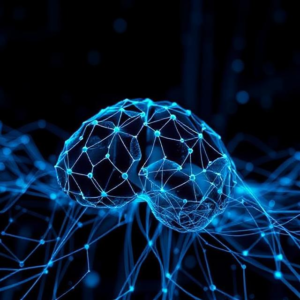Neural Networks in Communication Systems in an easy-to-understand way.
What are Neural Networks?
A Neural Network is a type of artificial intelligence (AI) inspired by how the human brain works. It is a system of nodes (called neurons) that work together to process information. Neural networks can learn from data, identify patterns, and make decisions based on that learning.
Think of a neural network as a brain for machines. Just like our brains learn from experience and adjust how we do things, neural networks learn from data to make predictions or decisions.

How do Neural Networks Work?
- Neurons:
- A neural network consists of layers of neurons. Each neuron takes input (data), processes it, and passes it on to other neurons.
- Layers:
- Input Layer: This is where the neural network receives the raw data (like a signal or an image).
- Hidden Layers: These are the layers where the processing happens. The more hidden layers, the more complex the decisions the neural network can make.
- Output Layer: This is where the result or decision is given, like predicting a signal’s quality or classifying data.
- Learning:
- Neural networks “learn” by adjusting the weights (strengths) of connections between neurons. During the training process, the network receives data and adjusts these weights to minimize errors in its predictions. This is done through a process called backpropagation, where the error is sent back through the network to improve it.
What Are Neural Networks Used For in Communication Systems?
In communication systems, neural networks are used to improve various aspects, such as signal processing, error correction, and network management. Here’s how they help:
1. Signal Detection and Classification:
- In communication systems, signals are often noisy (interference or distortion), and it’s hard to detect them accurately. Neural networks can learn the patterns of signals, even in the presence of noise, and classify or detect the signal correctly.
- For example, in wireless communication, neural networks can help distinguish between different types of signals, like voice, video, or data, even when the signals overlap or are degraded.
2. Channel Estimation and Equalization:
- In wireless communication, the channel (the path over which signals travel) can cause distortions due to noise, fading, and interference.
- Neural networks can estimate the state of the communication channel and equalize the signal, correcting for distortions, and improving the quality of the received data.
- This is especially useful in systems like 4G/5G networks and Wi-Fi, where the environment may change rapidly, and the network needs to adapt in real-time.
3. Error Detection and Correction:
- Neural networks can help detect and correct errors in communication systems. When data is transmitted, it may get corrupted due to noise.
- A neural network can learn to recognize patterns in corrupted data and correct errors automatically, ensuring that the data received is as close as possible to the original.
4. Resource Management and Optimization:
- Neural networks can be used to optimize the allocation of resources like bandwidth, power, and network traffic. For instance:
- A neural network could decide the best way to allocate bandwidth to different users in a 5G network.
- It can predict network traffic patterns and adjust resources in real-time to avoid congestion and ensure high-quality service for users.
5. Network Traffic Prediction and Routing:
- Neural networks can predict traffic patterns in a network by analyzing historical data. For example, if a neural network notices a pattern of high traffic at certain times, it can predict when the network will be overloaded and adjust routing accordingly.
- In wireless networks, it can decide the best routes for data to travel, avoiding congestion and delays.
Advantages of Using Neural Networks in Communication Systems:
- Adaptability: Neural networks can adapt to changing conditions in the network, such as varying traffic patterns or environmental interference. This is crucial in dynamic wireless environments.
- Improved Performance: They can improve the accuracy of signal detection, error correction, and resource allocation, leading to better overall performance of the communication system.
- Real-Time Learning: Neural networks can continuously learn from new data, which means they can keep improving even after deployment.
- Handling Complex Problems: Communication systems often face complex challenges, such as noise, interference, and distortion. Neural networks excel at handling these types of problems because they can learn patterns from complex data.
Applications of Neural Networks in Communication Systems:
- Wireless Communication: Neural networks are used to improve signal detection, channel estimation, and interference management in wireless networks like Wi-Fi and 5G.
- Cellular Networks: Neural networks can help with optimizing the allocation of resources like bandwidth and power across cells in a cellular network.
- Satellite Communication: In satellite communication systems, neural networks are used for error correction, signal processing, and adaptive power control.
- Internet of Things (IoT): In IoT systems, neural networks can manage the communication between devices, optimize power usage, and handle sensor data processing.
In Summary:
- Neural Networks are a type of artificial intelligence inspired by the human brain that learns from data to make decisions or predictions.
- In communication systems, neural networks help with tasks like signal detection, channel estimation, error correction, and resource optimization.
- They are valuable because they can adapt to changing conditions, improve performance, and handle complex tasks like noise reduction or real-time traffic prediction.
Neural networks essentially make communication systems smarter, improving reliability, efficiency, and user experience in everything from mobile phones to satellite communication.
In simple terms, neural networks help communication systems “think” and make better decisions automatically to ensure data is transmitted accurately and efficiently.











